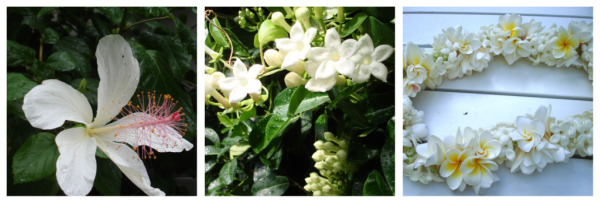I was sold! It also made me wonder what else this guy might have growing in his Hollywood Hills garden, so I sent him an e-mail to find out.

Fragrance seems to be of top importance to this gardener: "From coffee blossoms to gardenia to the huge rare scented Hawaiian hibiscus, Hibiscus arnottianus, outside my front door, [fragrance is] a big focus of my gardening," he wrote in an e-mail. "My favorite scented hibiscus I have smells like honey! It blooms about eight to nine months of the year (of course, not now)." As you can see from the photo he sent (far left), it looks pretty good too.
I did some digging into our archives for more information on fragrant plants. I turned up a story called "Scents and Sensibility" written by Julie Bawden Davis. Fragrance, she explains, is produced when a plant's essential oils evaporate and the molecules are released into the air. White and pastel blooms tend to be the most fragrant, Davis writes, with pale pinks being the most potent of the pastels. Bright orange- and crimson-colored flowers may look dramatic, but they usually have little or no smell. That's because fragrant flowers produce scent to attract pollinators such as bees and discourage pests; non-fragrant flowers use color and shape to do so.



![A Tranquil Jungle House That Incorporates Japanese Ethos [Video]](https://asean2.ainewslabs.com/images/22/08/b-2ennetkmmnn_t.jpg)









